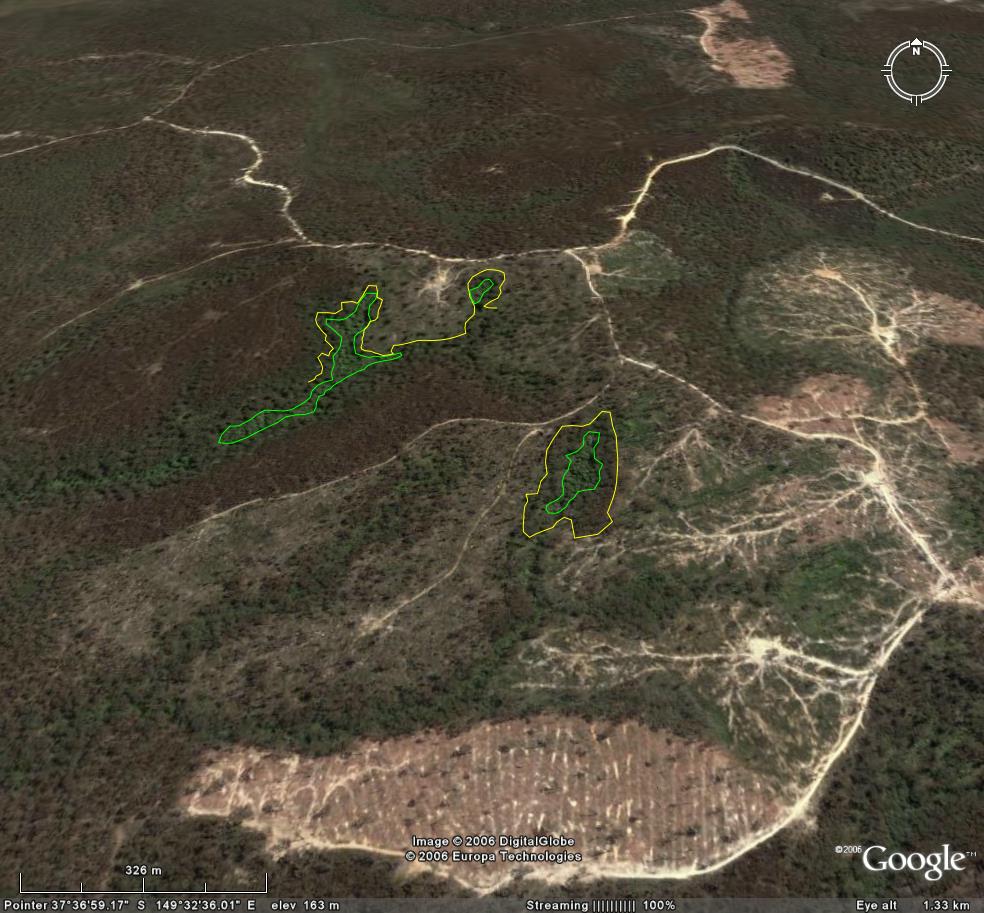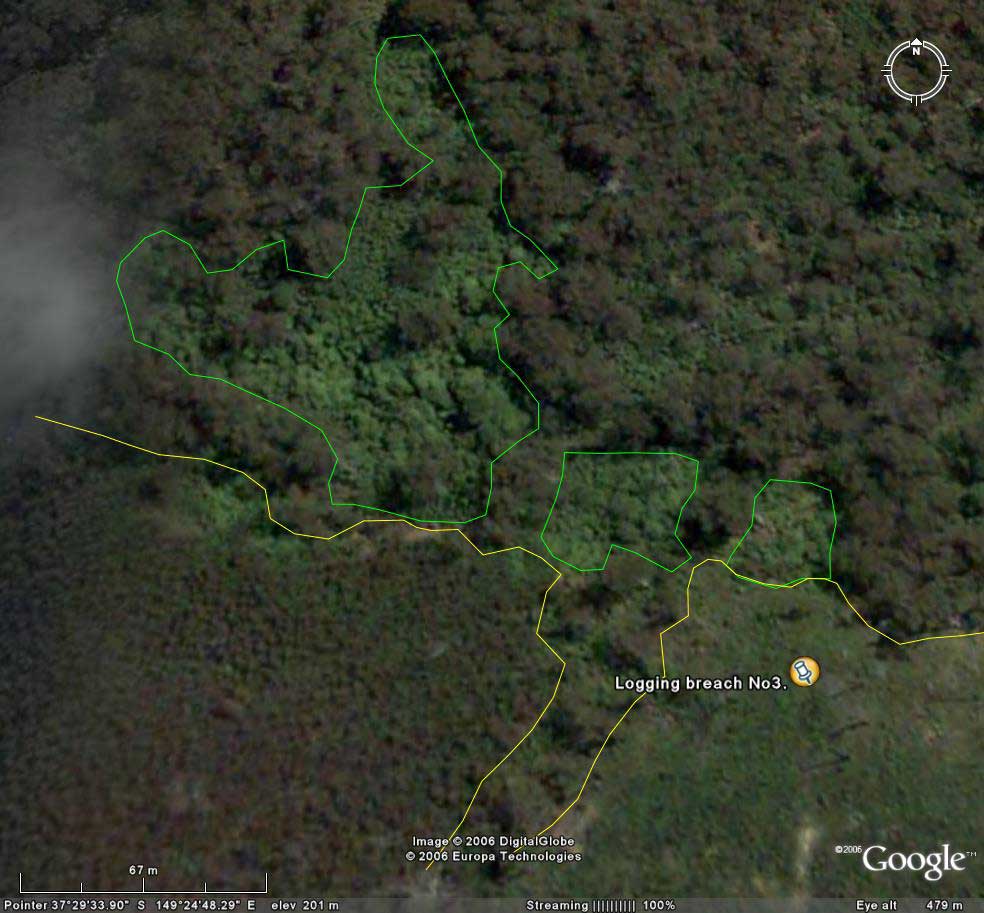Politics of rainforest buffers
The size of rainforest buffers has been an ongoing contentious political issue between conservationists and the native forest logging industry. Conservationists want bigger buffers that offer better protection for the rainforest. The native forest logging industry wants narrow buffers to maximise the number of trees that can be clearfell logged from the forest. Often the largest trees (that make the best sawlogs) grow near rainforest stands.
The image below supports the conservationists' view that lobbying from vested interests within the native forest logging and woodchip industry has resulted in the Victorian Government approving rainforest buffers that are inadequate. When looked at from the landscape level, there is doubt that rainforest stands can withstand wildfires that burn through an environment that has been made drier and more fire prone by large scale clearfell logging practices.
See more about the fire sensitive nature of rainforest.

The native forest logging/woodchip industry has maximised the extraction of trees in this part of East Gippsland by lobbying to ensure rainforest buffers are at a minimum or non existent. The remaining rainforest is now at a higher risk of being destroyed by the next wildfire. The green lines show the rainforest, the yellow lines show the buffer that has been applied.
How the RAinforest Buffer rules are bent
Section 2.3.7 of the 1996 Code of Forest Practices for Timber Production sets out rainforest buffers.
For East Gippsland the relevant section in the Code is section 2.3.7(i) where it states all rainforest should get a 40 metre buffer. Seems simple... However is is not.
In fact a smaller 20 metre buffer or no buffer is the standard for many rainforest stands. Why is this? Because the Forestry department has taken upon itself to interpret the Code differently to maximise the extent of clearfell logging in a given area, as demonstrated in the image below.
The buffers that are actually applied ignore the Code and instead follow the minimum requirements in the East Gippsland Forest Management Plan which only requires a minimum 20 metre buffer or no buffer at all if the rainforest stand is less that 0.4 ha is size. See image below.

Example of buffers not complying to the Code of Forest practices. Warm temperate rainforest is marked by the green line. Clearfell logging has occurred up to the yellow line. Where the green and yellow line meet, no rainforest buffer has been applied so the Code has been broken.
VRN believes rainforest buffers should be much greater than the 40 metre minimum in the Code. (See wildfire risk to rainforest)
VRN also has the view that the forestry department has been breaking the rules for over a decade by allowing illegal logging, using the Forest Management Plan buffer guidelines. Court cases have been won by conservationists against the government for unlawful logging that has occurred in East Gippsland (Dingo creek) and the Otways (Ciancio creek). In these cases the Judge found the Victorian government had failed to apply appropriate rainforest buffers in accordance with the the Code, and therefore the logging was illegal.
A proposed re-write of the Code of Forest Practices has confirmed the view of conservationists that there is ambiguity and that the buffers outlined in the Code should be regarded as the minimum standard. See more.
The Victorian State government has still not acted to make the forest department follow its own rainforest buffer rules in the Code. However, to the Government's credit, since 2003 the EPA has been engaged in auditing the Code of Forest Practices to make sure that logging complies to rules (whatever they might be). The first audit demonstrated that not even the substandard 20 metre rainforest buffers were being applied in many cases. See more